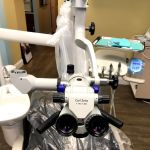
Best Ways to Prevent Tooth Infection After Extraction: Complete Guide
- Immediate Care After a Tooth Extraction
- How to Avoid Infection After a Dental Extraction
- Post-Extraction Care: What You Should Know
- When to Seek Help: Signs of Infection
1. Immediate Care After a Tooth Extraction
After a tooth extraction, the first few hours are crucial for preventing infection. Immediately following the procedure, your dentist will typically place a gauze pad over the extraction site to help stop the bleeding and form a blood clot. This clot is essential for the healing process, as it acts as a protective barrier against bacteria.
To ensure optimal healing, follow these steps:
- Keep Pressure on the Gauze: Gently bite down on the gauze to apply pressure and help the clot form. Replace the gauze every 30-45 minutes if needed.
- Avoid Spitting or Rinsing: Spitting or vigorous rinsing can dislodge the blood clot, leading to a condition known as dry socket, which increases the risk of infection.
- Use Ice for Swelling: Apply an ice pack to the outside of your face for 15-minute intervals during the first 24 hours to minimize swelling and discomfort.
By adhering to these initial care steps, you reduce the risk of complications, including infections, in the early stages of your recovery.
2. How to Avoid Infection After a Dental Extraction
Infections after a dental extraction can occur if bacteria enter the open wound. To prevent this, it’s essential to maintain a clean environment around the extraction site and promote healing. Here’s how you can avoid infections:
- Maintain Oral Hygiene: After the first 24 hours, gently rinse your mouth with a saltwater solution to cleanse the extraction site. Avoid commercial mouthwashes that may contain alcohol, as they can irritate the wound.
- Follow Proper Brushing Techniques: Brush your teeth gently, but avoid brushing directly over the extraction site during the first few days. This helps prevent irritation and bacteria buildup.
- Stay Hydrated and Eat Soft Foods: Drink plenty of water to promote healing and choose soft foods that won't irritate the extraction area. Avoid hot, spicy, or hard foods, as they can lead to discomfort or infection.
Incorporating these practices into your daily routine significantly reduces your risk of developing an infection after a tooth extraction.
3. Post-Extraction Care: What You Should Know
Proper post-extraction care is essential to preventing infection and ensuring the healing process goes smoothly. After the first few days, as the wound begins to heal, you should continue to follow these guidelines to support recovery:
- Rest and Avoid Strenuous Activity: Rest is crucial during the first 48-72 hours to allow your body to focus on healing. Avoid heavy physical activity, as it can increase blood flow and dislodge the clot.
- Watch for Changes in Symptoms: If you experience worsening pain, swelling, or a foul odor coming from the extraction site, these could be signs of an infection and you should contact your dentist.
- Use Medications as Prescribed: If your dentist has prescribed antibiotics or pain relief medications, be sure to follow the instructions and complete the full course to prevent infection and manage discomfort.
Taking these measures will help speed up your recovery and reduce the chances of complications like infections or dry socket.
4. When to Seek Help: Signs of Infection
While most people recover from tooth extractions without complications, it's important to be vigilant and seek help if any signs of infection arise. If you notice any of the following symptoms, don’t hesitate to contact your dentist:
- Increased Pain: If your pain worsens after the first few days instead of improving, it may indicate an infection.
- Swelling and Redness: Persistent swelling or redness around the extraction site that doesn’t subside can be a sign of infection.
- Pus Discharge: If you notice any discharge from the wound, especially a yellow or greenish pus, this is a clear sign of infection.
- Fever: A fever is a serious indication that an infection may be spreading and you should seek immediate care.
Early intervention is key to preventing more severe complications, so be proactive in reaching out to your dentist if you notice any of these warning signs.
By following these best practices for post-extraction care, you can significantly reduce the chances of infection and ensure a smoother recovery. For more information on how to prevent tooth infections after an extraction or to schedule your post-extraction check-up, visit Dentistry Toothtruth.







 Evan Berson, DMD - Best of the Main Line Area5.0 (2 review)
Evan Berson, DMD - Best of the Main Line Area5.0 (2 review) Castle Dental & Orthodontics4.0 (249 review)
Castle Dental & Orthodontics4.0 (249 review) Puyallup Pediatric Dentistry5.0 (467 review)
Puyallup Pediatric Dentistry5.0 (467 review) South Shore Dental Care: Dory Stutman, DDS5.0 (7 review)
South Shore Dental Care: Dory Stutman, DDS5.0 (7 review) Henry J. Austin Health Center at Ewing Street3.0 (33 review)
Henry J. Austin Health Center at Ewing Street3.0 (33 review) Mountainside Dental Group - Rancho Santa Margarita4.0 (117 review)
Mountainside Dental Group - Rancho Santa Margarita4.0 (117 review) The Importance of Oral Health Education During Pregnancy for a Healthy Pregnancy
The Importance of Oral Health Education During Pregnancy for a Healthy Pregnancy Best Tips for Brushing Your Teeth Properly for Healthy Gums: Essential Techniques for Oral Health
Best Tips for Brushing Your Teeth Properly for Healthy Gums: Essential Techniques for Oral Health Why Skipping Dental Checkups Can Lead to Bigger Oral Health Problems
Why Skipping Dental Checkups Can Lead to Bigger Oral Health Problems Advantages of Porcelain Dental Restorations
Advantages of Porcelain Dental Restorations How Can Diabetes Cause Tooth and Gum Problems? Preventing and Managing Oral Health Issues
How Can Diabetes Cause Tooth and Gum Problems? Preventing and Managing Oral Health Issues Healthy Habits for Promoting Good Oral Health and Hygiene: Tips for a Healthy Smile
Healthy Habits for Promoting Good Oral Health and Hygiene: Tips for a Healthy Smile